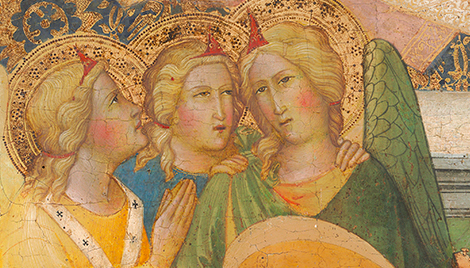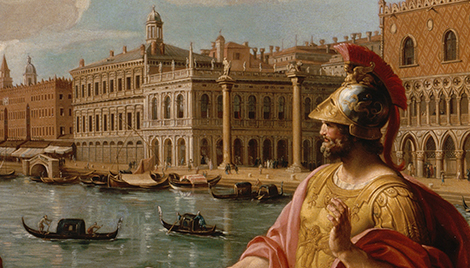Kress Collection Tapestries at the Philadelphia Museum of Art
Tapestry showing the Sea Battle between the Fleets of Constantine and Licinius, Pietro da Cortona, 1635, wool and silk with gold and silver threads, Philadelphia Museum of Art.
An impressive series of tapestries from the Samuel H. Kress Collection have decorated the balcony of the Great Stair Hall at the Philadelphia Museum of Art for decades. These thirteen Baroque style tapestries depict life events of Constantine the Great (270/288-337 CE), the Roman emperor whose conversion to Christianity was key to the rise of the religion. Altogether, the series is known as The History of Constantine the Great. Each massive tapestry, woven with wool, silk, and metallic threads, stands at approximately 16 feet tall, and range in shape. On each tapestry, the early Christian monogram Chi Rho can be found in the center of the top border, meaning “Christ.”
Tapestry showing Constantine Directing the Building of Constantinople, Sir Peter Paul Rubens, 1623-25, wool and silk with gold and silver threads, Philadelphia Museum of Art.
The first seven tapestries in the series were designed by Peter Paul Rubens around 1622 for King Louis XIII of France. The tapestries did not remain long in his possession, and he soon gifted them to Cardinal Francesco Barberini, a nephew of Pope Urban VIII in 1625. The last six tapestries were then designed by Pietro da Cortona in 1630, an artist frequently sought out by the Barberini family, to complete the set.
The tapestries remained with the Barberini family until 1889. They were split up and passed through various owners until they were finally purchased and reassembled by the Samuel H. Kress Foundation in 1956. In 1959 the series was gifted to the Philadelphia Museum of Art, where they remain today.
View of The History of Constantine the Great tapestries in the Philadelphia Museum of Art.



